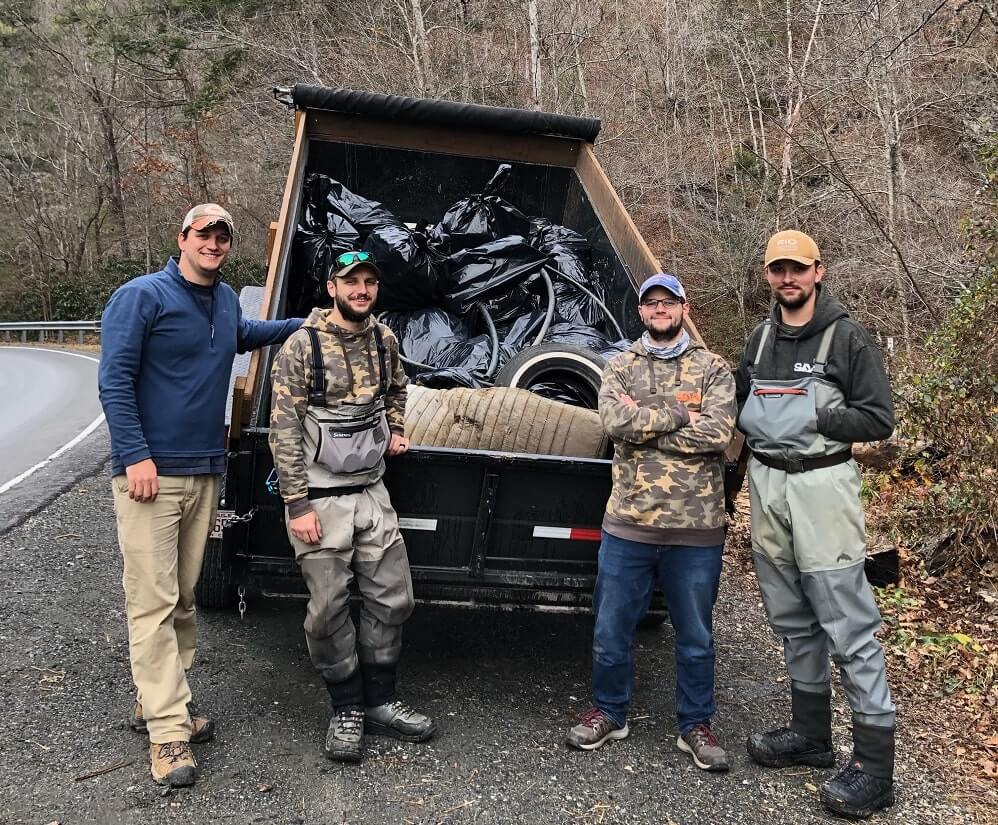South Toe is one of the cleanest rivers in North Carolina. Waterfalls crawl over big boulders to form deep plunge pools where native brook trout can be found year round. While the scenic river rumbles, and people begin to fly fish and camp, it is our duty as visitors to protect this wild trout river. As conservationists, we do not want this waterway to become another NC wildlife stocked stream that encourages individuals to eat the trout that are caught or even use barbs, treble hooks or live bait.
Read the topics below to learn more about how to protect your local trout stream.

Do Not Move Rocks or Build Rock Dams
While the South Toe river is a natural producing trout watershed, the amount of people trafficking the river, can be detrimental to a trout’s habitat. When people visit a natural place like the South Toe river, many campers want to eat the trout, move rocks or build rock dams. All of these activities can and will cause the nearby environment harm. While these activities many be fun to pursue, trout rely on the aquatic insects under rocks to maintain their diet. Therefore, moving rocks can cause trout to have a hard time finding food and may deplete fry that depend on the smaller insects to grow during early stages of life.
Man made rock dams are also a threat to killing not only trout, but amphibians, and aquatic insects. These dams also are a breeding ground for new bacteria strains that would not have been present if they were not built. Building rock dams causes water to pool up, creating a slow moving water source, almost like a pond. This water can heat up quicker than the natural flow of a river causing trout kills and other species to die off. Anytime there is a rock dam it is important to break it down so it will not disturb the immediate fishery.
Hellbender Population and Conservation
There are also many other amphibians that rely on rock structures and cold water to survive, including the hellbender that is native to Western North Carolina. Hellbenders are large salamanders that are prehistoric and are an excellent indication of a waters cleanliness. These beautiful and harmless amphibians will slowly crawl on the bottom of the river bed while eating fish. They will also crawl under rocks during the winter months and can be found crawling in and around rocks during spawning season in September (for Western North Carolina).
Further Downstream
All of the conservation practices mentioned above eventually tie into the big picture. While many may believe these conservation practices only protect the small creek upstream, these practices can greatly impact the larger river downstream and eventually the lake that it dumps into. With more and more developing for housing demand near our rivers in Asheville, NC anything that conservations can improve will impact the big picture. SAA is a conservation focused fishing guide service and we will continue to protect our fisheries, land and wildlife in and around Western North Carolina, right here at home in Asheville, North Carolina.
Contact Southern Appalachian Anglers Asheville Fishing Guide Service
Contact us online or call us at 828-691-1506 to learn more about conservation practices or help our team with one of our scheduled trash pickups in Asheville, North Carolina.
